How did the Polish invasion begin? Completion of the liberation of Moscow by the army of Skopin-Shuisky: the battle on the Karinsky field and near Dmitrov
Using the conclusion of the Russian-Swedish alliance against the Tushians as a pretext, the Polish king Sigismund III, who claimed the throne of Sweden, usurped by his younger brother Charles IX, declared war on Russia. But this was not enough for the Polish king, and he came up with a “legitimate” way of seizing the Russian throne. The king ordered Chancellor Lubensky to draw up a manifesto, where such an argument was put in the foreground: that once the Polish king Boleslav II put Prince Izyaslav Yaroslavovich on the throne of Kiev (before that Boleslav I had returned the throne to Svyatopolk Vladimirovich). True, Boleslav and Izyaslav Rusich were quickly expelled, but this was not remembered. He put the main thing on the throne and it means that the Russian princes became vassals of the Polish kings. And once the tribe of these vassals was stopped, Sigismund has the right to dispose of "escheat property." Thus, the legal basis for the complete conquest of the Russian kingdom was brought. One of the king’s associates, Palchevsky, even released a work, where it was argued that Russia should become a kind of “New World” for the Poles, a huge colony. Russian "heretics" should be crossed over and turned into slaves, like the Spaniards of the Indians. In a similar way, the Polish pans then behaved in the Western Russian lands (modern Belarus and Ukraine).
The campaign against the Russian kingdom was conceived by the Polish king even before the conclusion of the Vyborg treaty between the Russians and the Swedes. Back in January, 1609, the senators gave the king consent to the preparation of an intervention in the Russian state. After the failure of the Tushinoists to seize Moscow and the major defeats of the troops of Sapega, Khmelevsky and Rozhinsky, the Polish elite clearly understood that they would not succeed in achieving their goals of conquering the Russian kingdom with the help of False Dmitry. Then they went to open intervention, deciding to use Russia's extreme weakening and hoping to win the lightning campaign, without delaying the war. The Polish throne, the then “command center” of Western civilization, gave exceptional importance to the Polish intervention against Russia-Russia. It is not by chance that Pope Paul V, according to the custom of the crusades, blessed the sword sent to Rome before the start of the campaign and the helmet of the Polish king.
For Poland at this moment favorable foreign policy conditions emerged so that it could start a war with the Russian state. Lithuanian Hetman Khodkevich, the best commander of the Commonwealth, with only a few thousand fighters, defeated the 8-thousand-strong Swedish corps in the Baltic States, nearly capturing King Charles IX. And Sweden went to the conclusion of a truce. On the southern strategic direction of the Ottoman Empire it was linked by the war with Persia. Thus, Poland received free hand.
The Polish leadership was thinking over the two invasion plans. The crown hetman Zolkiewski suggested attacking Severshchina weakened by insurrection (from where the first impostor began the invasion). And the Lithuanian Chancellor Lev Sapega, the uncle of Yana who fought in Russia, and the former ambassador, the Velizh headman Gonsevsky, urged him to go to Smolensk and then to Moscow. Here personal personal considerations played a role - Smolensk region adjoined their possessions and would go to Lithuanian sisters. In addition, intelligence reports were received that most of the Smolensk fighters had gone to Skopin, only 4 was left from 1 archery orders, and the city was practically left without protection and would have to surrender without a fight. And the way through Smolensk to Moscow was shorter. The Polish gentry hoped for a quick campaign, believed that many Russian cities would open the gates to the king themselves, as they had previously submitted to the impostors, and the boyars would prefer his unpopular Vasily Shuisky and take the side of the strong.
True, there were problems with the collection of troops. Money to hire numerous mercenaries was not enough. The most riotous gentry had already gone to Russia to the impostor, and the rest did not rush to the service. And the king was able to speak at the end of the summer, initially gaining only 12,5 thousand warriors. But the Polish command has traditionally overestimated its strength and underestimated the enemy, it was believed that there would be enough demonstration of power and the Russians themselves capitulate, including the most powerful fortress in the west - Smolensk. Therefore, Sigismund III ordered his troops, concentrated near Orsha, to cross the Russian border and besiege Smolensk. 9 September 1609, the Polish army of King Sigismund crossed the Russian border. 13 September was captured by Red, and 16 September began the siege of Smolensk. Smolensk, contrary to expectations, could not be taken on the move and a long siege began.
Polish army. Siege of Smolensk. Painting by artist Julius Kossak
Battle of Karinsky Field
In the meantime, Skopin was able to crush the Tushins and free Moscow. Having completed the formation of the army, Skopin-Shuisky continued the liberation campaign and on October 9 took on the strategically important Alexander settlement. The Polish garrison, abandoned by hetman Sapieha, fled to the Tushino army, besieging the Trinity-Sergius monastery. Having occupied the former royal residence, Skopin-Shuisky was able to directly threaten the troops of the Polish hetman.
Skopin-Shuisky turned the Alexander settlement into its temporary support base, waiting for the reinforcements approach: the Fyodor Sheremetev detachment from Astrakhan and the regiments Ivan Kurakin and Boris Lykov-Obolensky from Moscow. The number of Skopin's army grew to 20-25 thousand soldiers.
Anticipating the possibility of attacking Sapieha’s troops, Skopin-Shuisky used tactics that had already led to success: he ordered to build field fortifications - slingshots, dolbyb, cuts and guards. At the same time, Skopin took measures to ease the pressure of the Tushins on the Trinity-Sergius Monastery. The commander sent several flying rats under the Trinity-Sergius Lavra, who continually attacked Sapieha's army from various sides and threatened to break through his siege ring. So, on October 11, the Russian squad went under Dmitrov, and on October 12, the Russian cavalry appeared 20 versts from the Trinity-Sergius Monastery, causing a stir in the siege army of Sapega. On October 16, the siege ring was temporarily broken and 300 Russian horsemen led by D. Zherebtsov were able to break through to the besieged fortress to help the garrison.
Thus, the commander of the Polish-Tushino army hetman Sapega fell into a difficult situation. The hetman needed to attack the army of Shuisky again, but he could not lead the whole army to the battle with Skopin, because in that case he would have to leave the siege of the Trinity-Sergius monastery, where the besiegers spent a lot of time and energy. He had to divide his army, leaving the monastery significant forces. Sapieha was joined by hetman Rozhinsky from Tushin with 2 thousands of hussars, as well as Colonel Stravinsky from Suzdal. The total number of Polish-Lithuanian cavalry was 10 thousand people, and together with the infantry army was about 20 thousand people.
28 October 1609, the troops of Sapieha and Rozhinsky attacked the advanced horseback hundreds of Skopin, crushed and drove them to Alexander settlement. However, continuing the attack, the Tushians ran into the field fortifications of the Russian army and were forced to stop when they came under fire from the Russian archers. When tushintsy otlylnu, they were attacked by the noble cavalry, cutting down the back rows. The hussars attacked again and their onslaught smashed against the beads and notches. The battle lasted all day. The enemy's cavalry was powerless against the tactics of the Russian general. Polish hetmans Sapieha and Rozhinsky never managed to break through the Russian fortifications and, having suffered serious losses, by the evening ordered his army to retreat. Sapieha went under the Trinity-Sergius Monastery. Rozhinsky again went to Tushino.
This victory further increased the authority of the young commander, and caused rejoicing in besieged Moscow. Skopin was the main hope of suffering hunger and deprivation of citizens of salvation. As the historian S.M. Solov'ev noted: “The Russian society, cluttered and shaken in its fundamentals, suffered from a lack of a foothold, from the absence of a person to whom it could be attached, near which it could be concentrated. At last Prince Skopin was such a person. ”
Skopin-Shuisky even offered to become a king himself. One of the leaders of the Ryazan nobles, Procopius Lyapunov, a former associate of Bolotnikov, sent Skopin a letter in which he defamed the hated people of Vasily Shuisky and even offered help to a young commander whom he extolled to the skies in seizing the throne. Skopin, according to the chronicle, did not finish reading, tore the paper and even threatened to give the people to Lyapunov to the tsar, but then relented and did not tell the uncle anything. Apparently, he did not want to deal with the adventurer Lyapunov, and did not need his support.
Apparently, Skopin was not going to claim the throne and crawl into the snake tangle of intrigues of the time. However Tsar Vasily learned about the incident, and clearly worried. Dmitry Shuisky was even more alarmed, hoping to inherit the crown in case of death of Vasily who had no heirs, and, moreover, Skopin, who was very jealous of military glory, because he had only defeats in his account. Thus, the military successes of Skopin saved the Russian kingdom and at the same time brought the death of the noble warrior closer.
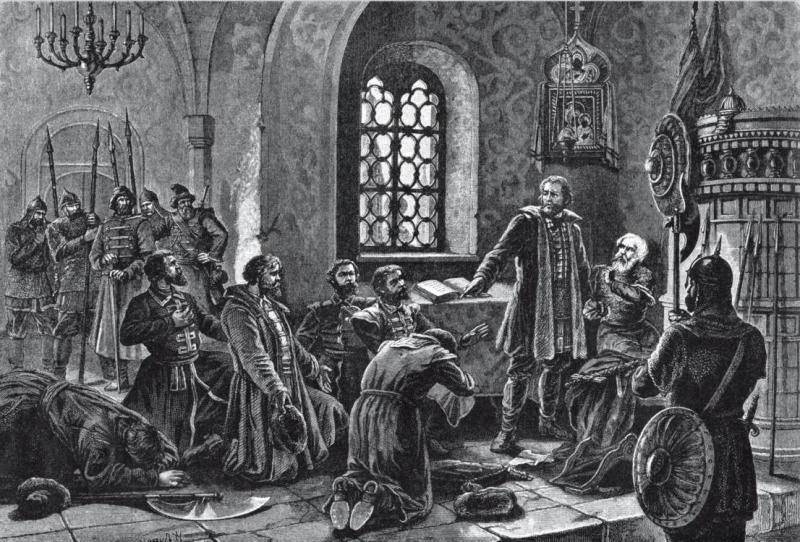
Prince Skopin-Shuisky tears up the letter of the ambassadors Lyapunov about calling for the kingdom. 19th century engraving
The collapse of the Tushinsky camp
After this victory, the Skopin-Shuisky detachments began to block Hetman Sapega in his own camp. The garrison of the monastery was strengthened and they again began making forays from the fortress. In one of the raids archers set fire to the wooden fortifications of the enemy camp. Sapieha ordered to lift the siege. 22 January 1610, the Polish-Tush troops moved away from the monastery in the direction of Dmitrov.
The position of False Dmitry II near Moscow became hopeless. Tushinsky camp was falling apart. Polish-Lithuanian Commonwealth entered the war with Russia, in September 1609, King Sigismund III laid siege to Smolensk. The Tushino Poles at first perceived this with irritation, offered to form a confederation against the king and demand that he leave the country which they already considered theirs. However, hetman Sapieha did not join them and demanded talks with the king. His position was the most significant. For its part, the Polish king sent commissioners headed by Stanislav Stadnitsky to Tushino. He demanded assistance from the citizens of Tushino, both from his subjects, and offering them extensive rewards both at the expense of Russia and in Poland. The Tushino Russians were promised the preservation of faith and all customs and also rich rewards. The Tushino Poles were tempted like many Russians. An attempt by an impostor to remind of himself and his “rights” caused the following rebuke to Rozhinsky: “What do you care, why did the commissars come to me? God knows what you are? Enough, we shed blood for you, but we see no use. ” Getman threatened Tushinsky thief with violence.
10 December 1609 Mr. False Dmitry with loyal Cossacks tried to escape, but was captured and taken under the actual arrest of Rozhinsky. However, at the end of December 1609 the impostor, Marina Mnishek and the Cossack ataman Ivan Zarutsky with a small detachment still secretly fled to Kaluga. There was created a new camp, but a patriotic, national color. False Dmitry II began to play an independent role. Not wanting to be a toy in the hands of Polish mercenaries anymore, the impostor already appealed to the Russian people, frightening them with the desire of the king to seize Russia and establish Catholicism. The Kaluga thief swore that he would not give the Poles a single inch of the Russian land, but together with all the people he would die for the Orthodox faith. This appeal has found a response among many. False Dmitry II again attracted many supporters, gathered an army and fought a war with two sovereigns: Tsar Basil and King Sigismund III. He again swore many cities. Not wanting to repeat the mistakes of the past, Lzhedmitry II closely watched that there were twice as many Russians in his army as foreigners.
The False Dmitri II movement began to take on a national character, so it was not by chance that many ardent supporters of the impostor later became active activists of the First and Second militias. As in Tushin, a state apparatus was created in Kaluga. Kaluga "Tsar" ordered on the lands subject to him to seize the Poles, and send all their property to Kaluga. Thus, the impostor and his government in the shortest possible time were able to improve their financial situation by expropriating the good that was stolen in the Russian kingdom by “Lithuania”. And the dungeons were filled with foreign hostages, whom the Kaluga "thief" later ordered to execute, which was fair, given the totality of their crimes in Russia.
The Poles who remained in Tushino finally submitted to the king. 4 February 1610, near Smolensk, the Tushino patriarch Filaret and the boyars concluded a treaty with Sigismund III, according to which the son of the king, Vladislav Zhygimontovich, was to become the Russian tsar. A prerequisite was the adoption of the prince of Orthodoxy. The Zemsky Sobor and the Boyar Duma received the rights of an independent legislative body, and the Duma at the same time - the judiciary. Tushino ambassadors swore: “As long as God will give us sovereign Vladislav to the Muscovite state,” “serve and direct and kindly want his sovereign's father, the current most powerful king of Poland and the Grand Duke of Lithuania, Zhigimont Ivanovich.” Acting on behalf of Vladislav, Sigismund III generously favored the Tushino land, which did not belong to him.
The Tushinsky camp itself soon died. In the south, in Kaluga, the troops loyal to False Dmitry II concentrated; in the north, near Dmitrov, Skopin-Shuisky and the Swedes were pressing, with difficulty being restrained by the Tushins. In such circumstances, the hetman Rozhen decided to move to Volokolamsk. March 6 army set fire to the Tushino camp and marched. The siege of Moscow finally stopped. Rozhinsky soon died from the "exhaustion of forces", and his squad collapsed. Most of the Poles joined the army of the king, and the Russians fled to where.
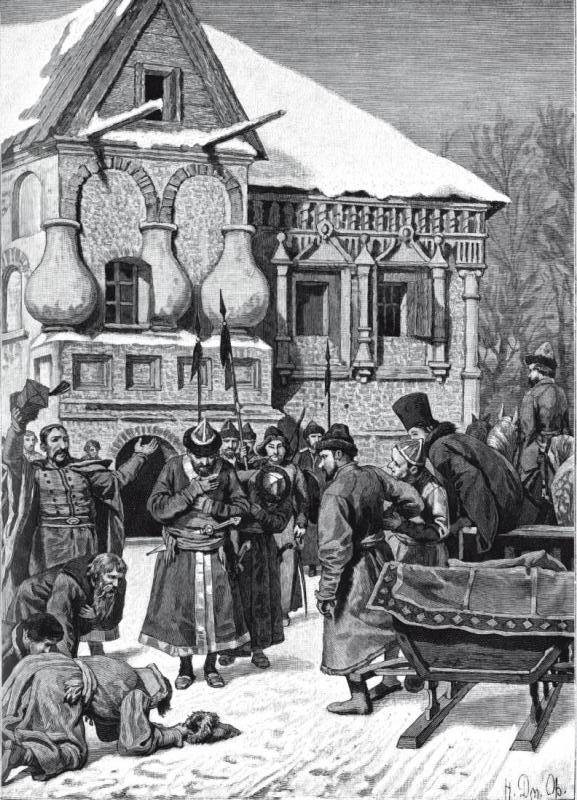
Arrival of Dmitry the Pretender (Tushinsky thief) in Kaluga after fleeing Tushin. Painting by Russian artist Dmitriev-Orenburg.
Battle of Dmitrov. Arrival in Moscow and the death of Skopin
Preparing for the final part and the goal of his liberation campaign - the liberation of Moscow, Skopin-Shuisky in the cold and snowy winter formed volatile groups of skiers numbering several thousand people from the warriors of the northern and Pomeranian cities, who exceeded even cavalry by maneuverability. They were the first to approach Dmitrov and defeated Sapega's strong guard post. The skiers did not dare to open battle in the field with the Lithuanian cavalry, but remained close to the city, blocking all the roads. Sapieha attempts using cavalry to remove the blockade of the city have not been successful.
Meanwhile, the main forces of the Skopin-Shuisky army approached the city. Since the storming of the city, reinforced by the wooden-earthen Kremlin, could lead to great losses and foreign mercenaries refused to participate in it, Skopin-Shuya chose to launch a siege. Sapieha could not be under siege for a long time. The Tushino camp collapsed, and it was impossible to expect any help from the False Dmitry and Rozhinsky, just like Lisovsky, who went to the king. Sapieha was forced to either seek his fortune in open battle or flee.
February 20 1610, the battle took place near Dmitrov. Skopin's troops attacked the Sapieha Tushino Cossacks in Dmitrov Posad. The blow was so unexpected and strong that the fortifications were broken and the Cossacks were defeated. Sapieha moved from the Kremlin to the aid of the Polish company, but it was too late. The Cossacks fled in panic, leaving all the guns, ammunition and all the property, and crushed the Poles. Polish companies also suffered heavy losses and retreated to the Kremlin. One day the hetman lost most of his troops. The small Polish garrison, which remained in Dmitrov, although it could protect the city walls, was no longer a serious danger. Soon the remnants of the army Sapieha left Dmitrov.
Skopin took Staritsa and Rzhev. He has already begun to prepare for the spring campaign. But at this time, Tsar Vasily ordered him to come to Moscow to pay homage. Delaugardi, who felt the evil, and who was friends with Skopin, dissuaded him from the trip, but the refusal looked rebellious. March 12 1610 of Skopin triumphantly entered the capital. The next sensible step of the Moscow government was the lifting of the siege of the Polish army from Smolensk, which had held the defense for many months.
The townspeople enthusiastically greeted the winner of the Poles and Tushins, fell down on him, kissed his clothes. The Tale of the Victory of the Moscow State states: “And there was great joy in Moscow, and they began to ring in all the churches with bells and ascribe prayers to God, and all the great joys were filled. The people of Moscow all praised the wise kind mind, and beneficence, and the courage of Mikhail Vasilyevich Skopin-Shuisky. " At the same time, the envious and dumb Dmitry Shuisky allegedly shouted: “Here comes my opponent!” Skopin’s growing popularity has caused the king and the boyars to be jealous and afraid. Many people wanted to see the victorious Skopin-Shuisky on the royal throne, and not the hated Vasily Shuisky, especially since the Skopins-Shuisky clan was the older branch of Rurik. Especially unfriendly to Skopin-Shuisky was the talentless brother of the Tsar, Dmitry Shuisky, who was considered the heir to Basil.
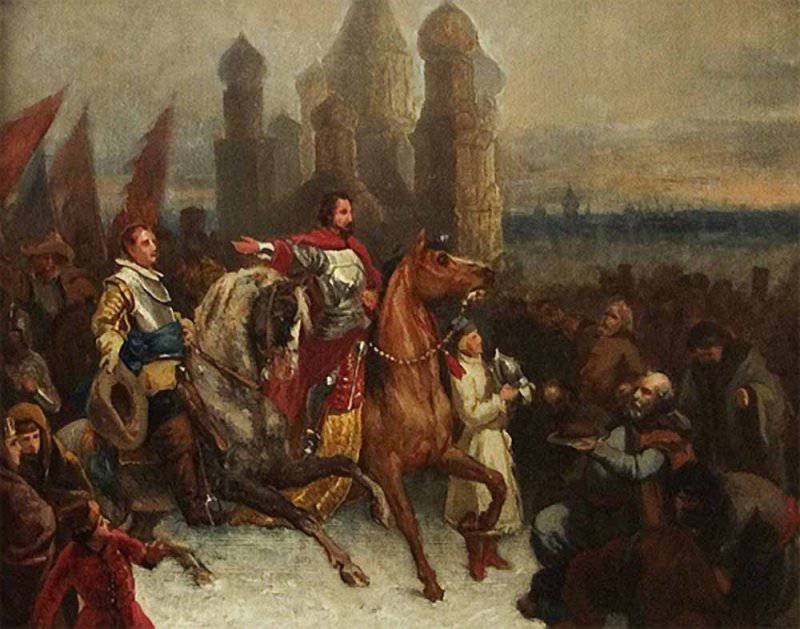
Entry Shuisky and Delagardi in Moscow. Artist V. Schwartz
At the feast of Prince Vorotynsky, Dmitry's wife (the daughter of Malyuta Skuratov) brought a cup of wine, after drinking Skopin-Shuisky, he felt bad, blood gushed from his nose (similarly, Boris Godunov was eliminated). After two weeks of torment, he passed away on the night of 24 on April 1610. The crowd almost torn to pieces by Dmitry Shuisky, but the detachment sent by the tsar saved his brother. The great Russian commander, who was just 23 of the year, was buried in the new chapel of the Archangel Cathedral.
Many contemporaries and chroniclers directly accused Vasily Shuisky and Skuratovna in death. A foreigner, Martin Ber, who was in Moscow, wrote: “But the brave Skopin, who saved Russia, received Vasily Shuisky as a reward — poison. The king ordered him to be poisoned, annoyed that Muscovites respected Skopin for intelligence and courage more than he himself. All of Moscow was plunged into sadness after learning of the death of a great man. " Prokopy Lyapunov, a man knowledgeable in those matters, accused the brothers of being poisoned by Prince Mikhail — and went to False Dmitry II.
Thus, Shuiskis dynasty itself killed and buried their future. If in the battle of Klushin, where the incompetent imperial brother Dmitry suffered a complete defeat, commanded Skopin-Shuisky, his outcome probably would have been different. But it was precisely this military catastrophe that led to the collapse of the throne of Vasily Shuisky, complete anarchy began again in the state, Russia began to be torn to pieces. The Poles came to Moscow and took dynasty Shuiskis prisoner. All this, perhaps, could have been avoided in case of the victory of the Russian army over the Poles.
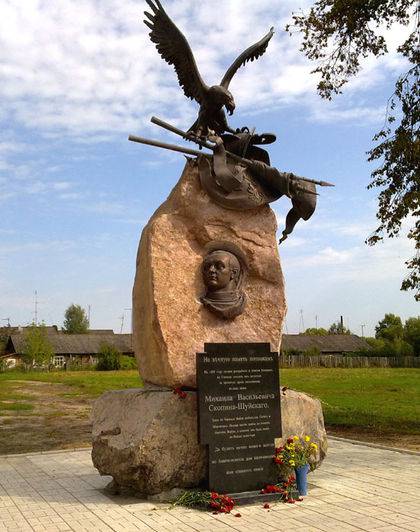
Osprey trampling the Polish-Lithuanian banners - a monument to Skopin-Shuisky in Kalyazin
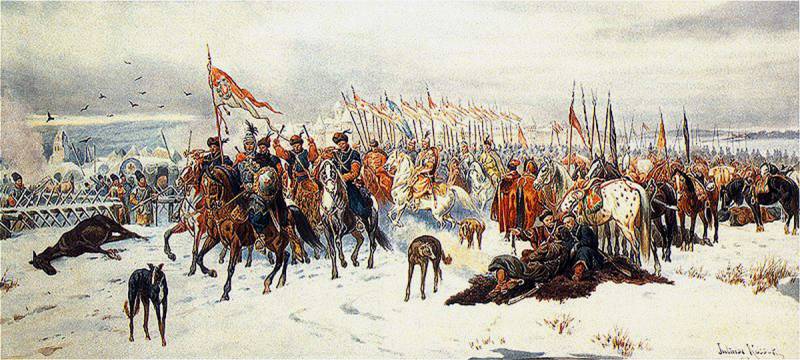
Information